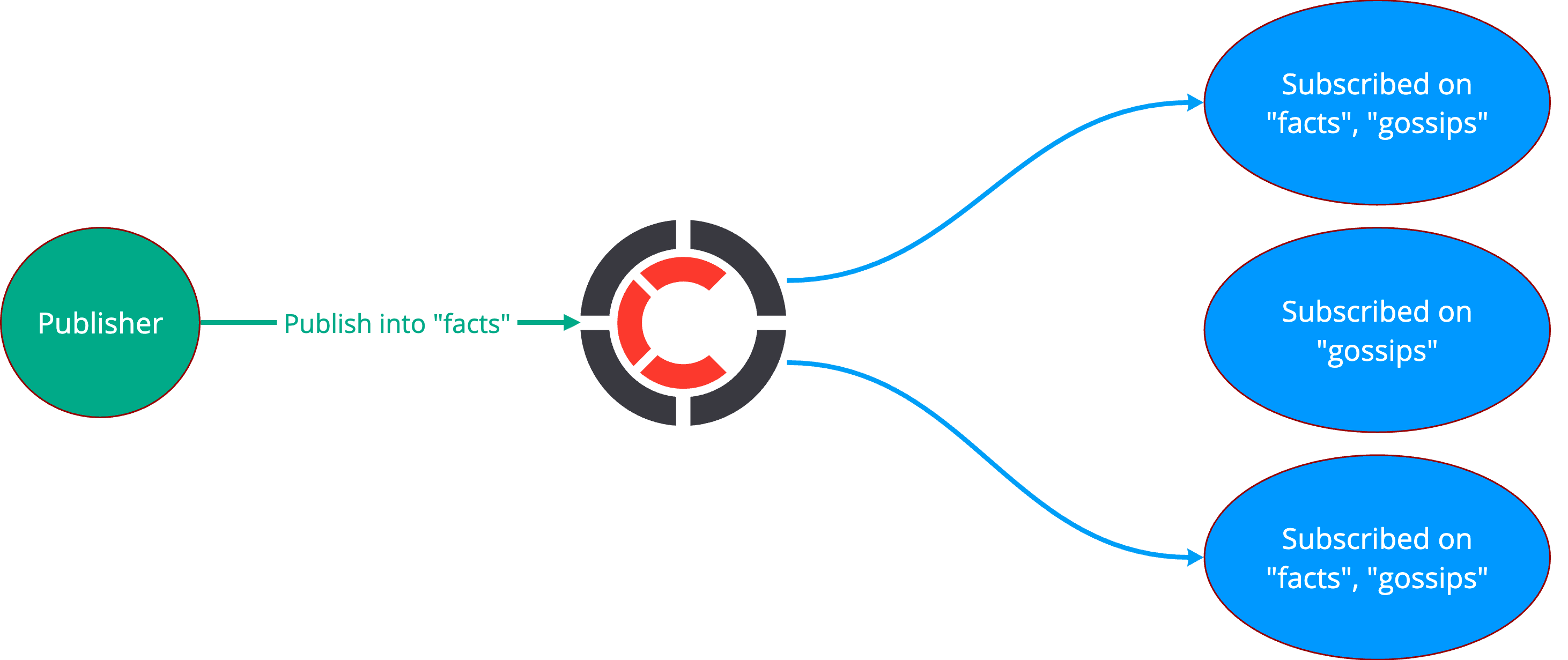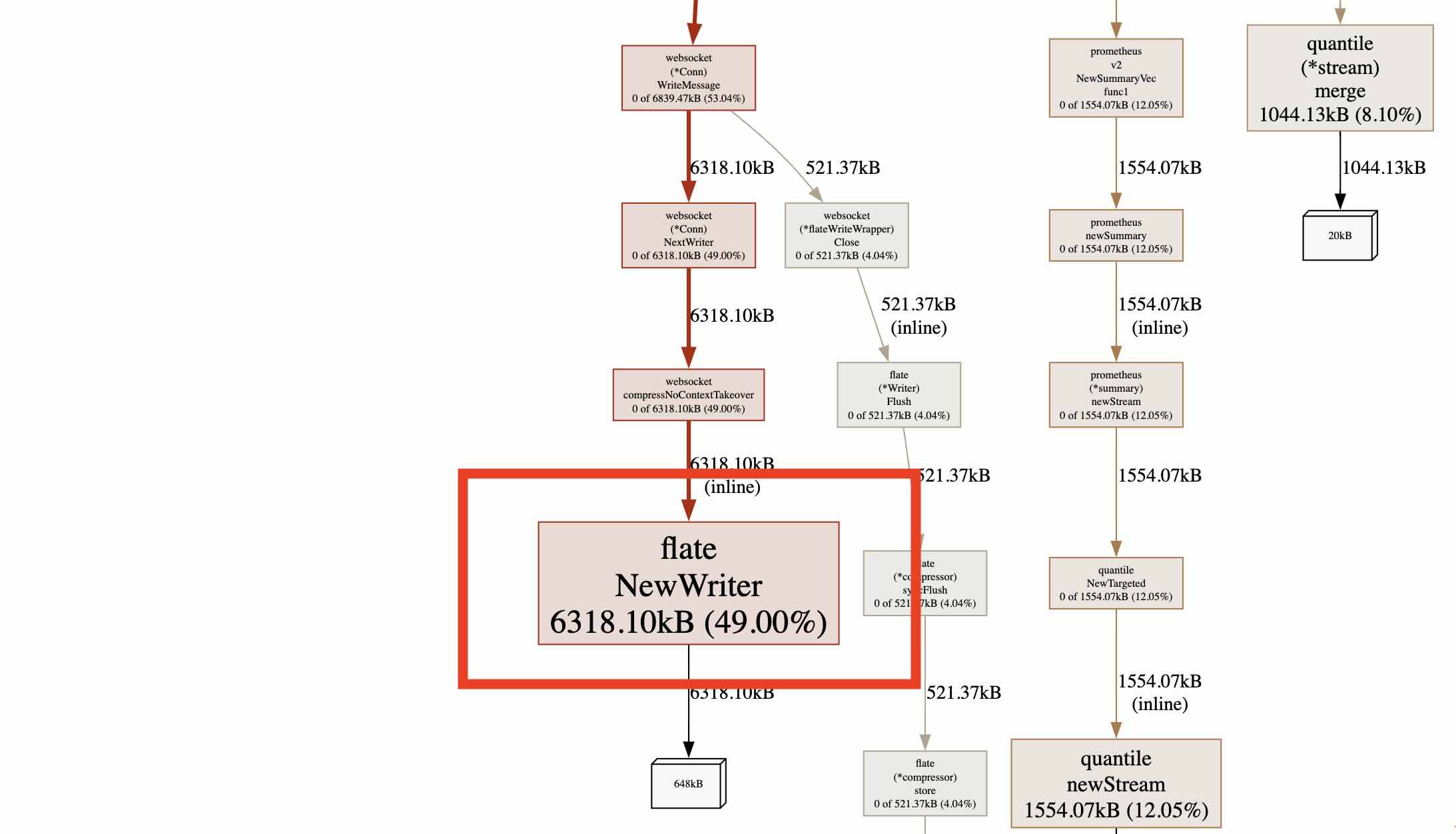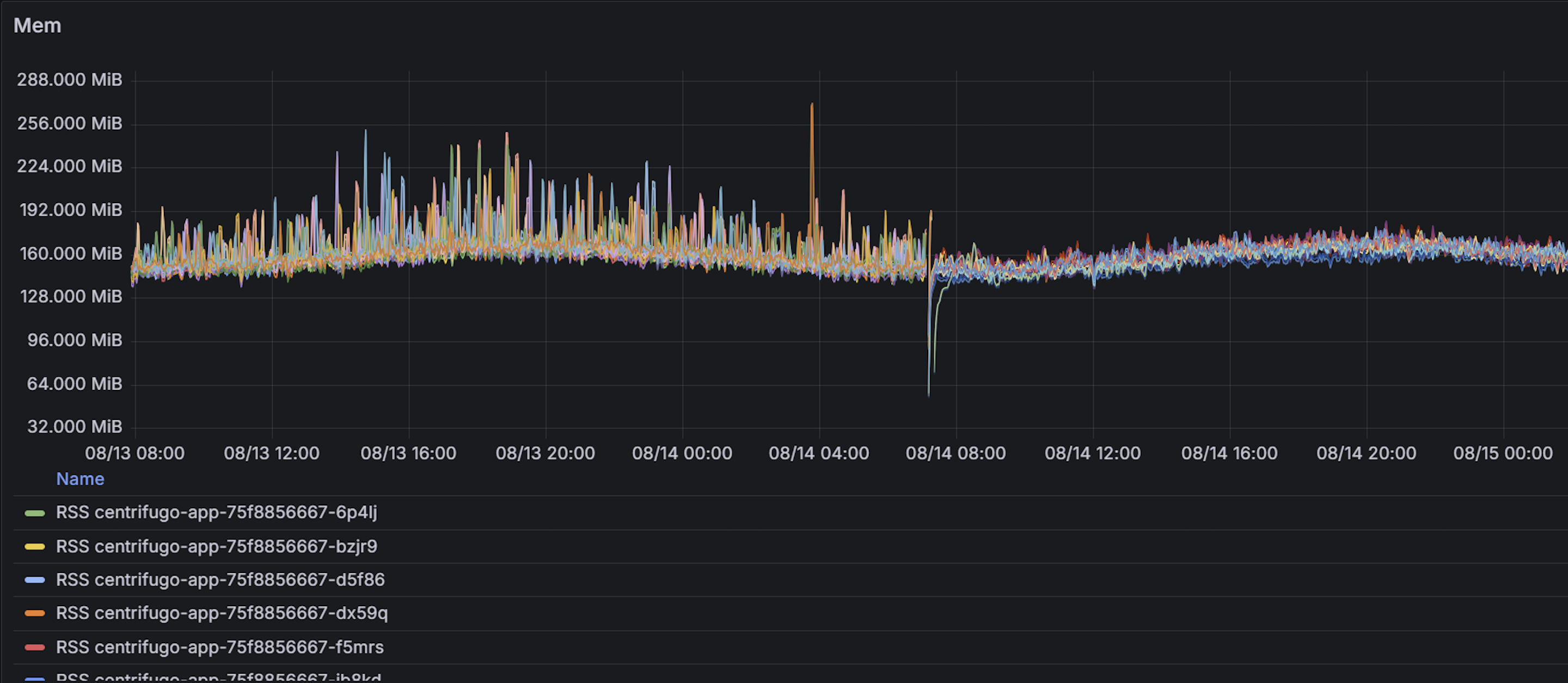Performance optimizations of WebSocket compression in Go application

In a recent blog post, we talked about the Delta Compression feature of the Centrifuge/Centrifugo stack. We continue the topic of real-time data compression here, and in this post, we will show the optimizations for WebSocket compression made recently in collaboration with one of our Centrifugo PRO customers.
The optimizations described here allowed our customer to reduce the transmit bandwidth used for real-time communication by 3x by enabling WebSocket compression, while keeping server CPU and memory utilization at comparable levels. This eventually resulted in notable savings of up to $12,000 per month on their bandwidth bill.
The optimization is now part of our open-source centrifugal/centrifuge library for the Go language and Centrifugo PRO offering. However, the concepts described here can be applied not only to other Go projects but also beyond the Go ecosystem.
Huge kudos to the Skin.Club engineering team (and Sergey in particular) for bringing us the case, evaluating the changes, providing graphs from production, and reviewing this post.
Enabling WebSocket compression
WebSocket compression allows reducing the size of messages exchanged between a client and server over a WebSocket connection. Nowadays, it's achieved using the permessage-deflate algorithm (see RFC 7692), which compresses the data before transmission. By reducing the data size, WebSocket compression helps optimize bandwidth usage and may actually lower latency due to the reduced data size over the wire.
Centrifuge library (the core of Centrifugo server) uses Gorilla WebSocket library for its WebSocket transport implementation (actually, we have our own fork with minor modifications, but the core is the same). Gorilla WebSocket supports WebSocket compression by using a Go standard's library compress/flate package. Enabling compression on server side can be done by setting an EnableCompression option of the websocket.Upgrader:
var upgrader = websocket.Upgrader{
EnableCompression: true,
}
Then it's possible to control whether to use compression for a message by using EnableWriteCompression method before you are writing data to the specific connection:
conn.EnableWriteCompression(false)
// Write data.
When paying for bandwidth, minimizing its usage can result in substantial cost savings, even if it leads to higher CPU and memory consumption on the server side. This is why our customer chose to enable WebSocket compression to evaluate its impact on their metrics:

Sorry for the image quality; at that point, we did not know that the case would eventually lead to a blog post. However, what is important to emphasize from these graphs is that when WebSocket compression was enabled:
- The graphs show a significant reduction in transmit bandwidth on nodes, from 7.5 to 2.5 MiB/s at peak times (or in sum across all nodes from 45 to 15 MiB/s).
- We observe a notable (approximately 2x) increase in CPU usage.
- We see how memory usage was affected in a bad way – instead of being super-stable we now observe sporadic spikes, up to 2.5x larger values.
Despite the negative change of CPU and memory utilization, migrating to WebSocket compression was still economically beneficial for our customer. As mentioned earlier, this step alone allowed the company to save up to $12,000 per month on bandwidth costs, while the additional resource usage costs were comparably much lower.
Fortunately, at Centrifugal Labs, we had prior experience with WebSocket compression performance overhead. This allowed us to suggest some optimizations to mitigate the resource usage degradation. To understand these optimizations, we first need to explore how WebSocket compression works under the hood.
Permessage-deflate in gorilla/websocket
In Go, when you need to compress the WebSocket frame your starting point is compress/flate package from Go standard library. That's what Gorilla WebSocket uses to implement permessage-deflate compression. You can find the implementation in compression.go file.
When compressing frames the user may choose one of the predefined levels of compression - from 1 (BestSpeed) to 9 (BestCompression).
One of the important compression implementation details is that Gorilla WebSocket uses sync.Pool for flate.Writer (separate pool for each level of compression) and flate.Reader types:
var (
flateWriterPools [maxCompressionLevel - minCompressionLevel + 1]sync.Pool
flateReaderPool = sync.Pool{New: func() interface{} {
return flate.NewReader(nil)
}}
)
Having a pool for these objects allows Gorilla WebSocket to reuse existing readers/writers and generally avoid additional allocations. The benefit of having a pool for flate.Writer is enormous, especially when considering how large this type is:
package main
import "unsafe"
import "compress/flate"
func main() {
var w flate.Writer
println(unsafe.Sizeof(w))
// Output: 656640
}
So it's around 650 KB on its own! For flate.Reader it's not that critical as it's only 16B overhead. Having pools makes a lot of sense and helps Gorilla WebSocket to perform well when compressing data.
Thus when you call Conn.WriteMessage or use Conn.NextWriter API for connections with compression negotiated under the hood Gorilla Websocket library acquires flate.Writer from the proper pool for the time of write operation.
Gorilla WebSocket implements permessage-deflate without context takeover only. Implementing a context takeover would mean attaching a flate.Writer to each connection – which is very memory inefficient as we can see. Though it can be still a viable money-effective bandwidth optimization for WebSocket – especially if the app does not have a lot of concurrent connections.
But below we will describe a scenario in which having just a sync.Pool is not enough to avoid extra allocations.
PreparedMessage type
Let’s delve into the specifics of Centrifuge/Centrifugo. Both the Centrifuge library and the Centrifugo server implement the PUB/SUB pattern for real-time messaging. Clients can establish a WebSocket connection and subscribe to multiple channels, all multiplexed over a single connection. A single channel can have many online subscribers — often thousands. Our APIs enable publishing a message to a channel, ensuring it is delivered to all online subscribers of that channel. Here’s a simple illustration of the PUB/SUB pattern:

When you publish a message to a channel, our WebSocket server puts the message into each subscribed client's individual queue. Client queues are processed concurrently in separate goroutines, and messages are eventually sent to the client over the transport implementation. WebSocket is the most frequently used transport implementation in our case.
With WebSocket compression enabled, broadcasts to a channel with many online subscribers result in many compression operations that compress the same message concurrently. This, in turn, results in a load on sync.Pool, which grows significantly at the point of such a broadcast. Given the size of each flate.Writer object, this is exactly what causes the temporary memory spikes we observed on the graphs above. More allocations also mean more CPU utilization.
In your app, you may observe something like this in the heap profile:

That's why, at some point in the past, Gary Burd (author of Gorilla WebSocket) added a PreparedMessage type. This is a helper type that allows caching the constructed WebSocket frame depending on various negotiated connection options (compression used or not, compression level).
// PreparedMessage caches on the wire representations of a message payload.
// Use PreparedMessage to efficiently send a message payload to multiple
// connections. PreparedMessage is especially useful when compression is used
// because the CPU and memory expensive compression operation can be executed
// once for a given set of compression options.
type PreparedMessage struct {
messageType int
data []byte
mu sync.Mutex
frames map[prepareKey]*preparedFrame
}
// prepareKey defines a unique set of options to cache prepared frames in PreparedMessage.
type prepareKey struct {
isServer bool
compress bool
compressionLevel int
}
// preparedFrame contains data in wire representation.
type preparedFrame struct {
once sync.Once
data []byte
}
Then there is a method func (*Conn) WritePreparedMessage, which should be used to write data to all connections interested in a message — the proper WebSocket frame will be created once and then automatically re-used. By the way, this is an example of the elegant use of sync.Once.
preparedMessage, _ = websocket.NewPreparedMessage(websocket.TextMessage, data)
_ := conn.WritePreparedMessage(preparedMessage)
This means that if we broadcast the same prepared message to many connections, we remove the excessive load on sync.Pool, just taking a one flate.Writer from the pool instead of many. This way, we avoid large memory spikes due to big size of flate.Writer objects and sync.Pool growth.
For broadcasts, PreparedMessage approach significantly reduces CPU usage by minimizing the need to construct and compress WebSocket frames, especially as the number of concurrent subscribers increases. Additionally, it reduces the allocation of large flate.Writer objects, further optimizing CPU utilization.
Gorilla WebSocket contains benchmarks which compare message broadcast to many connections with enabled compression without and with PreparedMessage usage. Let's run them:
❯ go test -run xxx -bench BenchmarkBroadcast -benchmem
Compression_100_conn-8 198619 ns/op 14113 B/op 301 allocs/op
CompressionPrepared_100_conn-8 42643 ns/op 12320 B/op 19 allocs/op
Compression_1000_conn-8 1797432 ns/op 123864 B/op 3001 allocs/op
CompressionPrepared_1000_conn-8 649506 ns/op 11421 B/op 19 allocs/op
Compression_10000_conn-8 16506132 ns/op 1040709 B/op 30007 allocs/op
CompressionPrepared_10000_conn-8 7702265 ns/op 11631 B/op 21 allocs/op
Benchmarks demonstrate that PreparedMessage significantly reduces memory allocations during broadcasts, with the impact becoming more significant as the number of connections increases.
PreparedMessage cache
For Centrifuge/Centrifugo though, we couldn't directly use PreparedMessage in the part of the code responsible for preparing messages for channel broadcasts. This is because doing so would introduce a dependency on a WebSocket-specific type in a layer of code that should remain agnostic to the underlying real-time transport.
To avoid this, we chose not to rely on the PreparedMessage type in the broadcasting preparation layer. Instead, we implemented a cache of PreparedMessage types within the WebSocket transport implementation layer.
We use the data to be sent to the WebSocket connection as a cache key, and the PreparedMessage object as a value. The WebSocket transport implementation checks the cache before constructing PreparedMessage and has a high chance of finding it. The TTL (time-to-live) of each cache entry can be kept very short (something like 1 second should be sufficient). The size of the cache should be comparable to the total size of all different messages being broadcasted concurrently. For most WebSocket applications, a cache size of several megabytes should be more than enough.
We used maypok86/otter cache for our implementation, but there are a lot of other options in Go ecosystem.
Here is how we initialize the cache:
otter.MustBuilder[string, *websocket.PreparedMessage](int(config.CompressionPreparedMessageCacheSize)).
Cost(func(key string, value *websocket.PreparedMessage) uint32 {
return 2 * uint32(len(key))
}).
WithTTL(time.Second).
Build()
And use it at the point where we want to write data to the WebSocket connection on a transport layer:
...
if usePreparedMessage {
key := convert.BytesToString(data)
preparedMessage, ok := t.preparedCache.Get(key)
if !ok {
var err error
preparedMessage, err = websocket.NewPreparedMessage(messageType, data)
if err != nil {
return err
}
t.preparedCache.Set(key, preparedMessage)
}
err := t.conn.WritePreparedMessage(preparedMessage)
if err != nil {
return err
}
} else {
...
}
You may wonder why the cache at this level can make a difference compared to simply using conn.WriteMessage. At first glance, the probability of finding a PreparedMessage in the cache during a concurrent broadcast seems similar to getting a flate.Writer from the sync.Pool for reuse. However, that's not entirely true, because the WriteMessage method of Gorilla WebSocket acquires a flate.Writer for the duration of the write operation, which involves a syscall and generally takes much more time than our cache operations. Additionally, two subsequent writes that reuse the flate.Writer will construct the frame from scratch, whereas a cached PreparedMessage allows us to avoid this.
It's important to note that the fact we use a cache is actually a Centrifuge-specific detail to avoid dependency on a type from the WebSocket library in places where we don't want to be tied to specific transport implementations. In your WebSocket app that uses Gorilla WebSocket, you can likely create a PreparedMessage directly and use it when iterating over connections to which you need to broadcast the message. This approach might even lead to more predictable behavior than what we have in the Centrifuge case with a cache. While the cache approach is somewhat probabilistic, the probability is high, and as we'll see below, it works well.
Mentioning klauspost/compress
Since we are discussing compression optimizations in the Go ecosystem, it would be wrong not to mention the klauspost/compress library created by Klaus Post. The library is backwards compatible with standard Go packages but provides faster implementations of compression algorithms. Additionally, it offers capabilities beyond those of the standard library.
Specifically, it provides Stateless Compression, which theoretically could help with the use case we described here.
However, in our initial evaluations of klauspost/compress (switching to its flate implementation and also trying the Stateless Compression feature), we did not observe notable improvements in our specific set of benchmarks (and actually observed regressions in some cases). So, for now, we are sticking with the standard Go library. Nevertheless, it's still a promising direction for research, and we may re-evaluate our findings in the future. Since we use our own fork of Gorilla WebSocket, we can easily switch to klauspost/compress if we prove the benefit.
Results
Alright, it's time to see how enabling PreparedMessage cache helped the customer with a resource usage.
First, let's look at CPU after enabling the cache in production:

We see that the average CPU utilization is significantly reduced at peak times, closer to values before enabling the WebSocket compression.
Second, let's look at memory usage:

As we can see on the graph – the pattern smoothed a lot making the usage on each Centrifugo node much more stable. It's still not the same as it was with compression disabled, we can see minor spikes – but the positive effect of PreparedMessage cache is clear.
Conclusion
Enabling WebSocket compression helped our customer significantly reduce monthly costs, and with PreparedMessage cache optimization, we were able to keep resource usage at a comparable level. So, it was mostly a no-brainer improvement.
If you are a Go developer, our open-source centrifugal/centrifuge library for Go supports WebSocket compression and contains the cache described here — so if you build your app on top of Centrifuge, you just need to enable a couple of options to benefit from it:
websocketConfig := centrifuge.WebsocketConfig{
Compression: true,
CompressionPreparedMessageCacheSize: 1048576 // 1 MB.
}
If we talk about Go, the technique with prepared message is also applicable to other WebSocket libraries, not just Gorilla WebSocket. For example, with gobwas/ws, it seems possible to construct a prepared compressed WebSocket frame, though it involves slightly more work than with Gorilla WebSocket, which provides a handy PreparedMessage type for this and abstracts the complexity of frame building (based on the set of connection-negotiated options).
That's it for today. In some cases, when working with WebSocket broadcasts, the bandwidth may be reduced even more — check out our post about Delta Compression.
